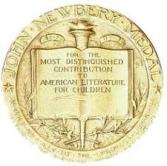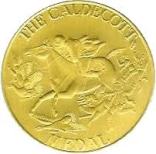
Question 1: If my son and I spend 15 minutes every night listening to classical music, how many hours of listening will we have stacked up over the course of a year? (answer at bottom of post)
Question 2: If we average 3 pieces per evening, how many compositions will we have listened to over the course of a year? (answer at bottom of post)
I have been thinking it would be helpful to have a tab on title-block that would take us to a page where our music themes were listed. So, OMGosh this has taken forever to assemble (and only includes music I have blogged about since July, 2014), but VOILA! This post is now tabbed on title-block as “Our Music Themes“.
(This is merely a listing; to read a few short lines of information about each composition and find links to youtube videos of said compositions, click on the links.)
Music Themes – Post Titles
Art set to music: Checkered House, by Grandma Moses – from “Good Books, Bad Books“
- Over the River and Through the Wood – Lydia Maria Child
- Sleigh Ride – Leroy Anderson
- Carol of the Animals – Robert Davis
Art set to music: Pirate Chief, by Howard Pyle – from “Fly By“
- The Maid of Amsterdam – traditional sea chanty
- Overture to The Flying Dutchman – Wagner
- Pirates of the Caribbean Suite – Klaus Badelt
Art set to music: The Clipper Ship, by Currier and Ives – from “Garden Par-tay“
- Sea Songs – Ralph Vaughan Williams
- Overture to H.M.S. Pinafore – Gilbert and Sullivan
- Over the Waves – Juventino Rosas
Art set to music: The Fall of the Cowboy, by Remington – from “Answers for Everything“
- Thanksgiving – George Winston
- Hoedown – Aaron Copland
- Back Home Again – John Denver
Back to School – from “If it’s August“
- Flight of the Bumblebee – Rimsky-Korsakov
- Entry of the Gladiators – Julius Fucik
- Song of the Volga Boatmen – traditional
Barbershop Quartets – from “The Cliffs Notes Version“
- Sincere – Meredith Willson
- Mr. Sandman – Pat Ballard
Benjamin Franklin in France – from “It’s a Date!“
- Overture to The Abduction from the Seraglio – Mozart
- The Coffee Cantata – JS Bach
- Symphony No. 45 in F-sharp minor (Farewell Symphony) – Haydn
Black History Month Selections – from “Conversation Circle”
- Maple Leaf Rag – Scott Joplin
- The American Scene: The Southwest – William Grant Still
- Don’t Get Around Much Anymore – Duke Ellington
Blue Days – from “Something Blue“
- Blue Skies – Irving Berlin
- Blue Tango – Leroy Anderson
- The Blue Danube Waltz – Strauss
Blue Moon Tunes – from “Second Time Around”
- Moonlight Serenade – Glenn Miller
- Rhapsody in Blue – George Gershwin
- Clair de Lune – Debussy
Brazil, thinking about – from “Tick, Tick, Tick“
- exploring “The Little Train of Caipira” – Heitor Villa-Lobos
The Cambrian Explosion – from “In Which We Learn about the Cambrian Explosion“
- Simple Gifts – Joseph Brackett
- Polka Dots and Moonbeams – Van Heusen/Burke
- 1812 Overture – Tchaikovsky
Chicken Coop Melodies – from “Farm Fresh“
- Symphony No. 83 in G minor (The Hen) – Haydn
- The Hen – Respighi
- Pick-a-Little, Talk-a-Little – Meredith Willson
- Chicken Reel – Joseph M. Daly/Leroy Anderson
Classical Broadway – from “Desperately Seeking Ganesha“
- Rosemary – Frank Loesser
- Piano Concerto in A minor – Edvard Grieg
- Baby Face – Akst/Davis
- Hallelujah Chorus – Handel
- Don’t Cry for Me, Argentina – Rice/Weber
- Violin Concerto in D minor – Brahms
Cuckoo for Music – from “Things that go Bump in the Night“
- Organ Concerto No. 13 in F major (The Cuckoo and the Hen) – Handel
- Symphony No. 6 in F major (The Pastoral) – Beethoven
- The Cuckoo – Respighi
Dealer’s Choice (my son selects 3 from a list of 10) – from “Starry Eyed“
- The William Tell Overture – Rossini
- The Cuckoo – Respighi
- Mambo – Leonard Bernstein
Dental Procedures, music for – from “Messenger Service“
- Symphony No. 6 in F major (The Pastoral) – Beethoven
- The Barcarolle – Jacques Offenbach
- The Moldau – Bedrich Smetana
The Doldrums – from “Going Nowhere Fast“
- Sea Songs – Ralph Vaughan Williams
- We Sail the Ocean Blue – Gilbert and Sullivan
- Sailing By – Ronald Binge
Duets! – from “Sap Happy“
- The Flower Duet – Leo Delibes
- Si Fino All’ore Estreme – Bellini
- People Will Say We’re in Love – Rogers and Hammerstein
Einstein and his Violin – from “Brainiac“
- Violin Serenade No. 6 – Mozart
- Violin Serenade No. 13 (Eine Kleine Machtmusik) – Mozart
- Violin Sonata No. 26 in B-flat major – Mozart
Exotic Lands – from “That’s Gotta Hurt“
- Scheherazade – Rimsky-Korsakov
- Overture to Abduction fro the Seraglio – Mozart
- Arrival of the Queen of Sheba – Handel
Fanfare for the Water Bear – from “A Fanfare for the Water Bear“
- Water Music – Handel
- The Aquarium – Saint-Saens
- The Wild Bears – Sir Edward Elgar
Franz Schubert Night – from “Dr. Livingstone, I Presume?”
- Serenade – Schubert
- Ave Maria – Schubert
- March Militaire – Schubert
French Composers – from “A Test of Faith“
- The Infernal Galop (The Can-Can) – Jacques Offenbach
- Clair de Lune – Debussy
- March of the Toreadors – Bizet
The French Horn – from “Working for Peanuts“
- Water Music – Handel
- Venus – Gustav Holst
- Pavane for a Dead Princess – Maurice Ravel
Fun Music Only – from “Inventors Invent“
- Dance of the Hours – Amilcare Ponchielli
- Chicken Reel – Leroy Anderson
- The Pink Panther – Henry Mancini
Good Shepherd – from “The Rattlesnake Sermon“
- Sheep May Safely Graze – JS Bach
- He Shall Feed His Flock Like a Shepherd – Handel
- Tender Shepherd – Charlap/Leigh
Groundhog Day – from “Rodent Rage“
- Winter – Vivaldi
- Waltz of the Snowflakes – Tchaikovsky
- Symphony No. 6 in F major – Beethoven
- Put on a Happy Face – Strouse/Adams
Halloween, scary music for – from “Back in the Saddle Again“
- Dance Macabre – Saint-Saens
- Mars – Gustav Holst
- Masquerade – Khachaturian
Harp Music of the Angels – from “Sunday School“
- Harp Concerto in B-flat major – Handel
- Harp Concerto in A major – Carl Ditters von Dittersdorf
- Concerto for Flut and Harp – Mozart
The Hungarian March, 3 Ways – from “Travelogue“
- Hungarian March – Berlioz
- Hungarian Rhapsody No. 15 – Liszt
- Hungarian Dance No. 19 – Brahms
Hymns: three from one – from “Riveting“
- Ave Maria – Jacques Arcadelt
- Symphony No. 3 in C minor (Organ Symphony) – Saint-Saens
- Finlandia Hymn – Sibelius
Inventions for Inventions – from “Lights! Camera! Edison!“
- Invention No. 6 in E major – JS Bach
- Invention No. 8 in F major – JS Bach
- Invention No. 13 in A minor – JS Bach
London Busses – from “Late Bloomer“
- Jupiter – Gustav Holst
- Pomp and Circumstance – Elgar
- Fantasia on Greensleeves – Ralph Vaughan Williams
- Overture to H.M.S. Pinafore – Gilbert and Sullivan
March Madness – from “Ranch Report“
- Colonel Bogey March – Lieutenant F.J. Ricketts
- The Imperial March – John Williams
March’s Marches – from “Wordery“
- The Redetzky March – Johann Strauss, senior
- March of the Siamese Children – Richard Rogers
- The Washington Post March – John Philip Sousa
Mendelssohn’s Midsummer Night’s Dream – from “Flying, Farming, and Felix“
- Overture to Midsummer Night’s Dream – Mendelssohn
- The Wedding March – Mendelssohn
Michelangelo’s Rome – from “One Sculptor, One Scoundrel“
- The Pines of Rome – Respighi
- Palladio for String Orchestra – Karl Jenkins
- Symphony No. 4 in A major (The Italian) – Mendelssohn
Minor Key Music – from “Miners and Minors“
- The Hebrides Overture – Mendelssohn
- In the Hall of the Mountain King – Edvard Grieg
- Ride of the Valkyries – Wagner
Minuet in G to the Power of 3 – from “Hendecasyllable“
- Minuet in G – Mozart
- Minuet in G – Beethoven
- Minuet in G – JS Bach
Mount Vesuvius – from “Mounting Interest“
- Funiculi Funicular – Luigi Denza
- Aus Italien – Richard Strauss
- Neapolitan Song – Rimsky-Korsakov
Music to Soothe – from “Music to Soothe“
- Mass in D minor, motet – Anton Bruchner
- Sheep May Safely Graze – JS Bach
- Simple Gifts – Joseph Brackett
Negro Spirituals – from “Heavenly“
- Down by the Riverside – traditional
- Wade in the Water – traditional
- Swing Low, Sweet Chariot – traditional
Nocturnes – from “Zootique“
- Nocturne No. 2 – Chopin
- Nocturne No. 3 – Liszt
- Harlem Nocturne – Earl Hagen
The Oboe – from “Music Mechanics“
- Arrival of the Queen of Sheba – Handel
- Swan Lake, final scene – Tchaikovsky
- Le Tombeau de Couperin – Ravel
Overtures – from “Takes a Lickin’ and Keeps on Tickin‘”
- Overture from H.M.S. Pinafore – Gilbert and Sullivan
- Overture from Midsummer Night’s Dream – Mendelssohn
- Overture from The Marriage of Figaro – Mozart
Paris Tribute – from “A Ghost by any other Name“
- The Swan – Saint-Saens
- Carillon – Bizet
- La Vie en Rose – Edith Piaf
Pizzicato! – from “The Price is Wrong“
- Divertissement: Pizzicati – Leo Delibes
- Symphony 4 in F minor – Tchaikovsky
- Anitra’s Dance – Edvard Grieg
The Presidents’ Music – from “The Liberace Instigation“
- classical pieces composed during each administration
The Recorder – from “Well Played“
- Sopranino Recorder Concerto in C major – Vivaldi
- Ode to Joy – Beethoven
- Greensleeves – traditional
The Sad Song Scale – from “Two Different Worlds“
- Symphony No. 3 in F major – Brahms
- What’ll I Do? – Irving Berlin
- Serenade – Schubert
Saint Patrick’s Day – from “The Business of March“
- Toora Loora Looral – James Royce Shannon
- The Irish Washerwoman – traditional/Leroy Anderson
- Danny Boy – Frederic Weatherly
Shrill Thrills! (the piccolo) – from “Jams and Jellyfish“
- Chinese Dance (Nutcracker) – Tchaikovsky
- Triton Fountain in the Morning – Respighi
- Stars and Stripes Forever – Sousa
Strauss Family, the splendidly gifted – from “780 Pairs of Saddle Shoes“
- Radetzky March – Johann Strauss, senior
- Feuerfest Polka – Joseph Strauss
- Thunder and Lightning Polka – Johann Strauss, junior
String Quartets – from “We the People“
- String Quartet in B-flat major (La Chasse) – Haydn
- String Quartet No. 2 in D major – Borodin
- Cantina Band (performed as a string quartet) – John Williams
Summertime – from “Barely Scraping By“
- Summer – Vivaldi
- Fireflies – Amy Beach
- Summertime – George and Ira Gershwin
- In the Summertime – Mungo Jerry
Sunday Night Music – from “How We Write“
- How Great Thou Art – Carl Gustav Boberg
- Turn! Turn! Turn! – Pete Seeger/Book of Ecclesiastes
- Let us Cheer the Weary Traveler – Nathaniel Dett
Surprise Endings – from “Bringing Handwriting up to Scratch“
- The Wild Bears – Sir Edward Elgar
- The Moldau – Bedrich Smetana
- The Imperial March – John Williams
Tambourines! – from “Peace, Love, and Tambourines“
- Mr. Tambourine Man – Bob Dylan
- Tarantella – Rossini/Respighi
- Russian Dance (Nutcracker) – Tchaikovsky
Tea Time – from “Textbooks – if we ruled the world“
- Tea for Two – Youmans and Caesar
- Tea for Two (Tahiti Trot) – Shostakovich
- Tea for Two – Art Tatum
Things in the Sky – from “Snakes and Pirates“
- Fireflies – Amy Beach
- Clair de Lune – Debussy
- Mercury – Gustav Holst
The Timpani – from “One Thing Leads to Another“
- Dance of the Seven Veils – Richard Strauss
- Thus Spoke Zarathustra – Richard Strauss
- Pirates of the Caribbean Suite – Klaus Badelt
Trains – from “Posting about Posters“
- The Little Train of Caipira – Heitor Villa-Lobos
- The Steam Engine – Patrick Doyle
- Take the A Train – Duke Ellington
Tribute: music for a beloved grandfather – from “Imagine That“
- Fight for California – McCoy/Fitch
- The Army Song – Sousa/Arberg
- Ashokan Farewell – Jay Ungar
The Vatican, background music for – from “Holy Zucchetto“
- Gregorian Chants – traditional
- Gloria in Excelsis Deo – Vivaldi
- Locus Iste – Bruchner
Virtuoso Night: Stanley Drucker – from “Affordable Housing Forever“
- Clarinet Sonata No. 1 in F minor – Brahms
- Appalachian Spring – Aaron Copland
- Rhapsody in Blue – George Gershwin
Virtuoso Night: Sir James Galway – from “Thousands and Thousands“
- Concerto for Flute and Harp – Mozart
- I Saw Three Ships – traditional
- Flight of the Bumblebee – Rimsky-Korsakov
Virtuoso Night: Wynton Marsalis – from “Novel Ideas“
- Concerto in E-flat major for Trumpet – Haydn
- Moto Perpetuo – Paganini
- The Prince of Denmark March (Trumpet Voluntary) – Jeremiah Clark
Virtuoso Night: Itzhak Perlman – from “Insert Clever Title Here“
- Humoresque – Dvorak
- Out of Africa, title music – John Barry
- Violin Concerto in E minor – Mendelssohn
Waltzing with Tchaikovsky – from “Case in Point: Ibn Battuta“
- Serenade for Strings – Tchaikovsky
- Swan Lake Waltz, Act II – Tchaikovsky
- Eugene Onegin, Polonaise – Tchaikovsky
Wistfulness – from “Finish the Poem“
- Romeo and Juliet Fantasy Overture, love theme – Tchaikovsky
- Ashokan Farewell – Jay Ungar
- What’ll I Do – Irving Berlin
Worker Bees, a soundtrack for – from “Bee Plus!”
- Moto Perpetuo – Paganini
- The Pizzicato – Leo Delibes
- Flight of the Bumblebee – Rimsky-Korsakov
Welcome to the best part of my night!
– Jane BH
(answer 1: 91+ hours)
(answer 2: 1,095 pieces of music)



















































